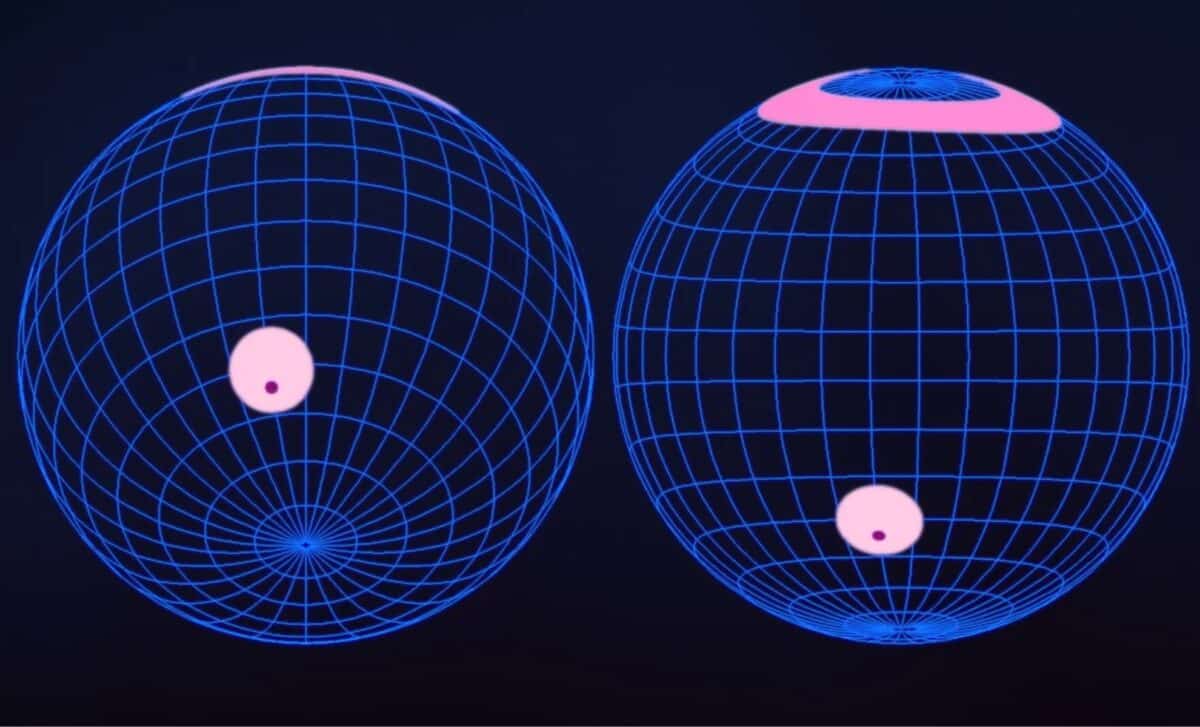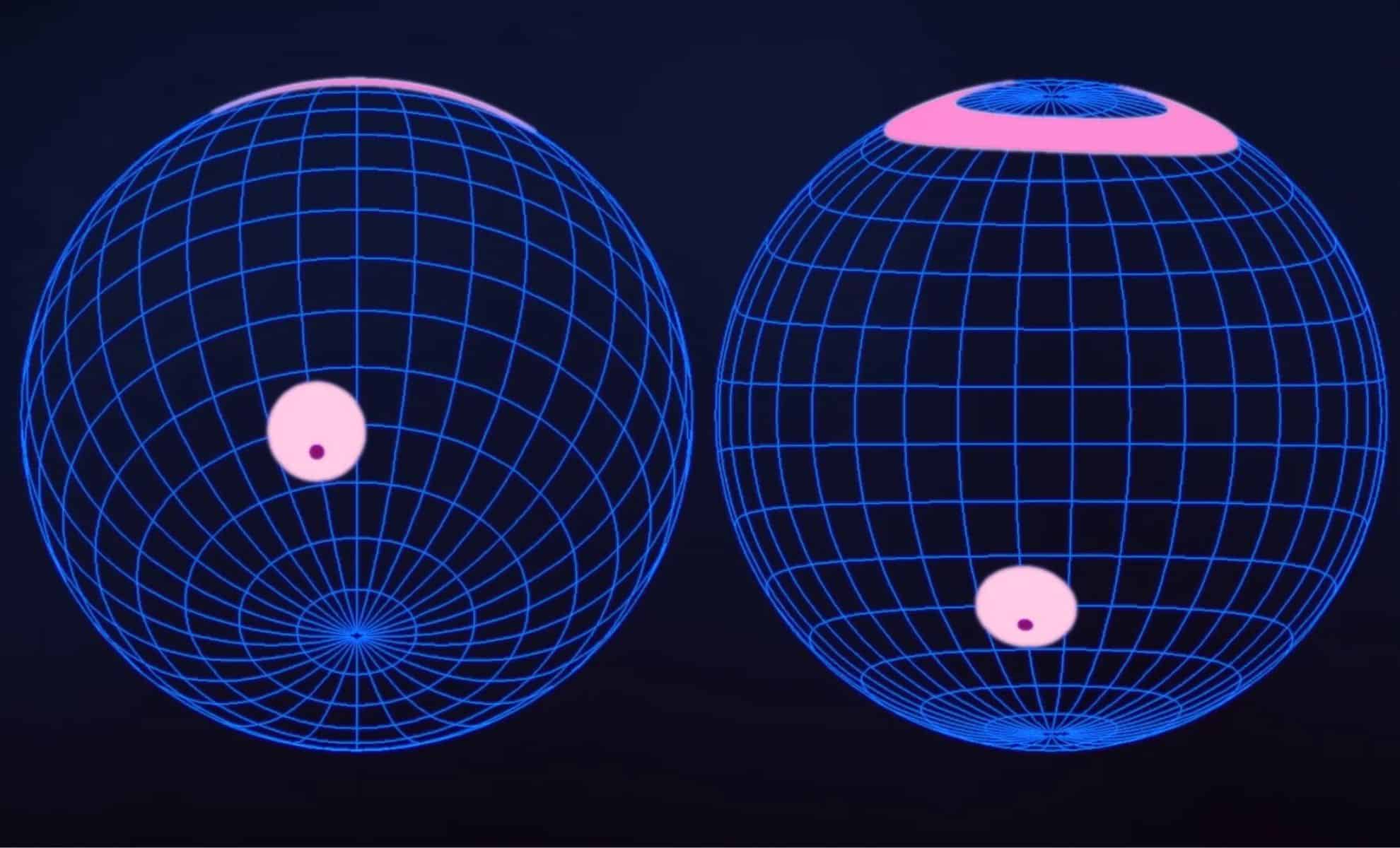Recent studies have provided precise measurements of the nearest millisecond pulsar, PSR J0437-4715, revealing its radius to be 11.4 kilometers and its mass 1.4 times that of the sun.
This research, led by a team from the University of Amsterdam, offers deeper insights into the composition and magnetic field of this neutron star.
Precise Measurements and Innovative Techniques
PSR J0437-4715 is a rotating neutron star located about 510 light-years from Earth in the constellation Pictor. It rotates 174 times per second and has a white dwarf companion. The pulsar emits a beam of radio waves and X-rays toward Earth every 5.75 milliseconds, making it the closest and brightest millisecond pulsar known.
To achieve these precise measurements, the team used data from the NICER X-ray telescope aboard the International Space Station (ISS) and applied pulse profile modeling, which involves complex statistical models processed on the Dutch national supercomputer Snellius.
The researchers combined X-ray data with mass measurements obtained by Daniel Reardon and colleagues at the Parkes Pulsar Timing Array. This combination allowed them to calculate the star's radius and map the temperature distribution of its magnetic poles. "Before, we were hoping to be able to calculate the radius accurately. And it would be great if we could show that the hot magnetic poles are not directly opposite each other on the stellar surface. And we just managed to do both," said principal investigator Devarshi Choudhury.
The utilization of NICER's data was crucial for this study, as it provided high-precision timing necessary to analyze the pulse profiles of the pulsar. The data revealed that the pulsar’s hot spots, regions where X-rays are emitted due to the intense magnetic field, are not symmetrically placed. This asymmetry provided new challenges and insights into the modeling of neutron star interiors.
Insights Into Neutron Star Composition and Behavior
The new measurements of PSR J0437-4715 indicate a "softer equation of state" than previously thought. This suggests that the maximum mass of neutron stars must be lower than some theories predict, aligning with observations of gravitational waves. Anna Watts, a neutron star expert at the University of Amsterdam, explained, "And that, in turn, fits nicely with what observations of gravitational waves seem to suggest."
These findings suggest that the matter inside neutron stars is less dense and more compressible than previously believed. This impacts our understanding of the properties of ultra-dense matter, which cannot be recreated in laboratories on Earth. The measurement of the neutron star's radius, combined with its mass, helps physicists to constrain the equation of state, which describes how matter behaves at the extreme densities found in neutron stars.
The research also revealed that the hot magnetic poles of PSR J0437-4715 are not directly opposite each other, providing new insights into the star's magnetic field and temperature distribution. This anomaly in the magnetic pole alignment could have implications for our understanding of the magnetic field dynamics and internal structure of neutron stars. The mapping of the temperature distribution across the pulsar’s surface further adds to our understanding of the thermal processes occurring within these dense objects.
Implications for Understanding Neutron Star Physics
This study is part of a series of papers on millisecond pulsars, contributing to a broader understanding of these fascinating objects. Future research will continue to explore the equation of state and mass-radius relationships of neutron stars, with additional papers focusing on other heavy pulsars and their characteristics.
The findings from this research have significant implications for our understanding of neutron stars and the extreme physics governing their behavior. By refining our knowledge of the mass and radius of these stars, scientists can better understand the limits of neutron star stability and the fundamental properties of matter under extreme conditions. This research also supports the development of more accurate models for neutron star behavior, which are essential for interpreting observations from gravitational wave detectors like LIGO and Virgo.
The precise measurements of PSR J0437-4715 provided by the University of Amsterdam team mark a significant advancement in neutron star research. These findings not only deepen our understanding of this particular pulsar but also contribute to the broader field of astrophysics, enhancing our knowledge of the universe's most extreme objects. The continuous efforts to study neutron stars with advanced instruments like NICER and supercomputers underscore the importance of multi-disciplinary approaches in unraveling the mysteries of the cosmos.




